NCGI hits mainstream
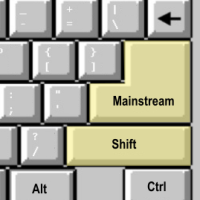 Remember when SAGD methane injection was just experimental? Now it has become mainstream.
Remember when SAGD methane injection was just experimental? Now it has become mainstream.
Without AppIntel, how can you find all the NCGI applications? How can you find out what all the other operators are doing? How will you know what's working and what's not? In AppIntel just type NCGI into the KiP search box.
Injecting methane can both decrease your operating cost and increase recovery in your SAGD operation.
Reading technical papers are fine. Running simulations can help. But actually seeing these gas injection in the field takes the expensive surprises out of your future.
Converting every pad
After experimenting with many SAGD pads in various stages of steaming and depletion, one operator has determined that every pad hereafter will have noncondensable gas injection.
He will reallocate displaced steam to other pads. He extols NCGI results in reducing steam-to-oil ratio (SOR) and energy efficiency gains for their project.
Check out which types of pad will get pure steam and which will get methane co-injection and why.
You can get his application documents for less than $100 -- self serve.
Buy these submission docs now Subscribers get them for free?subject=Help me get up to speed on methane injection in SAGD&body=Help me get up to speed on methane injection in SAGD. Show me different operator's opinions from their applications.%0D%0A%0D%0AMy Name:__________ %0D%0AMy Phone Number:__________ %0D%0A%0D%0A(Or call Proven Sales at 403-803-2500.)">Contact Proven for recent advances. We stay on top of thermal recovery strategies.
 1. First Installation
1. First Installation
The earliest application of non-condensable gas injection was submitted by an operator that hoped it would reduce steam-oil-ratios and insulate steam heat from dissipating through the cap rock. Very well written, his application documents and negotiation with the regulator are very instructive on many benefits of gas injection. Image attributed to Alete.
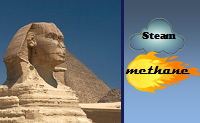 2. Methane and steam injection primer
2. Methane and steam injection primer
When his steam chambers reaches 60% recovery, one SAGD operator proposes to completely replace steam injection with methane. He describes thermal gas injection with primer-like detail.
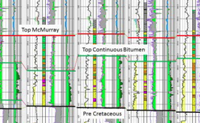 3. Methane reduces steam oil ratios
3. Methane reduces steam oil ratios
One operator is experimenting with NCG injection later in the life of wells. The application also describes the modifications to their production and injection systems.
?subject=I want a one day trial of AppIntel&body=Sign me up for a one day AppIntel trial so I can search quickly for steam and methane injection in heavy oil.%0D%0A%0D%0AMy Name:___%0D%0AMy Phone Number:____%0D%0A%0D%0AType of applications:___%0D%0A%0D%0APricing: https://www1.appintel.info/short-term-search/%0D%0A%0D%0A(Or call AppIntel Sales at 403-803-2500.)">Contact us now for a one day trial.
 4. Gas injection as a fence
4. Gas injection as a fence
One operator proposes injecting methane and steam around a pilot to re-pressurize the area. He's using non-condensable gas injection as a fence treatment to keep the SAGD operation in pattern.
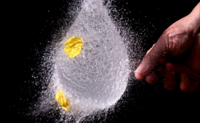 5. Methane injection during blowdown
5. Methane injection during blowdown
This operator not only wants to co-inject non-condensable gas with steam in his SAGD scheme, he wants to use it as an important part of this blowdown strategy. In his project, he intends to replace SAGD steam injection with a non-condensable gas (like methane).
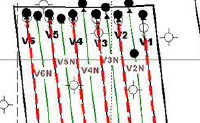 6. Non-condensable gas injection and SAGD infills
6. Non-condensable gas injection and SAGD infills
Injecting non-condensable gas and drilling infills in the same patterns is creating some excitement for this SAGD operator. He believes these combined with his special sense of timing will improve resource recovery by another 30%.
 7. SAGD NCG with CSS Infills
7. SAGD NCG with CSS Infills
One operator is experimenting with noncondensable gas injection in a SAGD pair and adding infill producers. But the infill producers are operated on a cyclic steam huff and puff.
 8. Methane or Propane?
8. Methane or Propane?
What is the future of bitumen recovery? Primary or thermal? SAGD or CSS? Inject methane, propane or surfactant? Some operators are experimenting with each in the same field.
We've given you 8 applications that document field trials of NCGI co-injection, but there are many more. Some of these strategies could drastically improve your thermal scheme.
All these have been passed the theoretical phase and lab test phase. Each has been implemented in the field.
Each have been ground truthed with injector UWIs. You can read their application, then check out the actual results by looking at their patterns in Accumap.
?subject=I want a one day trial of AppIntel to research applications like mine&body=Sign me up for a one day AppIntel trial so I can check out thermal applications like mine. I want to to see their technology.%0D%0A%0D%0AMy Name:___%0D%0AMy Phone Number:____%0D%0A%0D%0AType of applications:___%0D%0A%0D%0APricing: https://www1.appintel.info/short-term-search/%0D%0A%0D%0A(Or call AppIntel Sales at 403-803-2500.)">Contact us now to try it cheap and cheery.
You owe it to yourself and your investors to read the application documents that explore these pilot projects. You decide whether they will work for your field.
Tags: Gas Injection, Thermal, Heavy Oil
 Granger Low 24 Oct 2017
Granger Low 24 Oct 2017

Steam surfactant co-injection
Want to win? What is your competitive advantage?

Surprise! Sour gas production from a sweet thermal scheme
Dealing with surprises in the oil and gas industry. What to do next.

10 ways to increase production before Christmas - Infographic
For your wall to remind you

10 ways to increase production before Christmas
Each cost less than half a million

Using AI to reduce risk of oil and gas failure
How can you assess the risk without knowing the epic fails?

Artificial intelligence using vetted oil and gas information
Using anything else is dangerous

Your AI search history is being sold to your competitors
Your use of AI is not free

Smarter acquisitions
Video demo on using the KiP box for acquisitions

AI alerts increase the speed of innovation
AI launches oil and gas operators from rival wins

Elusive promise of ASP flooding
This one's ending

SAGD Blowdown Experiment
Shows his unexpected results

Selfie-mail: emails to myself
I send more emails to myself than to any other person.

Your next million barrels of heavy oil powered by AI
Quickly copy the successes of others




 Calgary, Alberta, Canada
Calgary, Alberta, Canada
 Share
Share